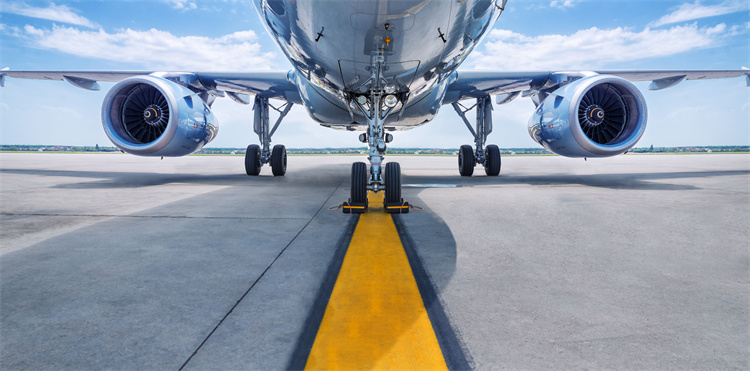Mexico's Air Freight Market: 2025 Insights

Air freight plays a crucial role in Mexico's economy, significantly impacting its GDP. With 62% of cargo arriving at major airports like MEX on freighter aircraft, the demand for air freight services continues to rise. The market's stability attracts increased capacity, highlighting the need for stakeholders to understand future trends. By 2025, insights into the air freight Mexico 2025 sector will be vital for strategic planning and investment. As the industry evolves, stakeholders must stay informed to capitalize on emerging opportunities and navigate challenges effectively.
Current State of Mexico's Air Freight Market

Overview of the Industry
Key Players and Stakeholders
The air freight industry in Mexico features several prominent players. Deutsche Post DHL Group, DB Schenker, Ryder System Inc., Penske Logistica, and FedEx dominate the market. These companies provide comprehensive logistics solutions, ensuring efficient cargo movement across borders. They play a crucial role in shaping the industry's landscape by offering innovative services and maintaining high operational standards. Stakeholders, including government agencies and private investors, collaborate with these key players to enhance infrastructure and streamline operations.
Current Market Size and Growth
Mexico's air freight market has witnessed significant growth in recent years. The market's expansion reflects the increasing demand for efficient cargo transportation. Major airports, such as Mexico City International Airport (MEX), handle a substantial volume of air freight, contributing to the market's overall size. The market's growth trajectory indicates a promising future, with projections suggesting continued expansion. This growth underscores the importance of strategic investments and infrastructure development to accommodate rising demand.
Recent Developments
Technological Advancements
Technological advancements have revolutionized Mexico's air freight industry. Automation and artificial intelligence (AI) play pivotal roles in optimizing logistics processes. These technologies enhance operational efficiency, reduce costs, and improve service delivery. Companies invest in cutting-edge solutions to stay competitive and meet evolving customer expectations. The integration of technology into logistics operations marks a significant shift towards more streamlined and efficient air freight services.
Regulatory Changes
Regulatory changes impact the air freight market significantly. The Mexican government implements policies to facilitate trade and enhance the industry's competitiveness. These regulations aim to simplify customs procedures, reduce bureaucratic hurdles, and promote international trade. Stakeholders must stay informed about regulatory developments to ensure compliance and capitalize on emerging opportunities. Understanding these changes is crucial for navigating the complex landscape of Mexico's air freight market.
Key Trends Shaping the Market by 2025

Economic Factors
Impact of Trade Agreements
Trade agreements significantly influence the air freight mexico 2025 landscape. Mexico's strategic location and trade partnerships, such as the United States-Mexico-Canada Agreement (USMCA), enhance its position in global logistics. These agreements facilitate smoother cross-border transactions, reducing tariffs and fostering economic collaboration. As a result, air freight operations experience increased efficiency and cost-effectiveness. Stakeholders must monitor these agreements closely to leverage opportunities and optimize their logistics strategies.
Economic Growth Projections
Economic growth projections play a crucial role in shaping the air freight mexico 2025 market. The International Monetary Fund (IMF) forecasts a global economic growth rate of 3.2% in 2024 and 2025. This growth positively impacts Mexico's air freight sector, driving demand for efficient cargo transportation. As the economy expands, businesses require reliable logistics solutions to support their operations. The air freight industry must adapt to these changes by investing in infrastructure and technology to meet rising demands.
Technological Innovations
Automation and AI in Logistics
Automation and artificial intelligence (AI) revolutionize the air freight mexico 2025 industry. Companies implement AI-driven solutions to optimize logistics processes, enhancing operational efficiency and reducing costs. Automation streamlines tasks such as cargo handling, inventory management, and route planning. These technologies enable faster and more accurate decision-making, improving service delivery. By embracing automation and AI, stakeholders can maintain a competitive edge and meet evolving customer expectations.
Sustainable Practices and Green Logistics
Sustainable practices and green logistics gain prominence in the air freight mexico 2025 market. Environmental concerns drive companies to adopt eco-friendly solutions, reducing their carbon footprint. Initiatives such as fuel-efficient aircraft, alternative energy sources, and waste reduction strategies contribute to sustainability goals. By prioritizing green logistics, businesses align with global environmental standards and enhance their brand reputation. Stakeholders must invest in sustainable practices to ensure long-term success and compliance with regulatory requirements.
Consumer Demand and Market Needs
E-commerce Growth
E-commerce growth significantly impacts the air freight mexico 2025 sector. The rise of online shopping increases demand for fast and reliable delivery services. Air freight plays a vital role in meeting these expectations, providing efficient transportation for e-commerce shipments. Companies must adapt to this trend by optimizing their logistics networks and enhancing last-mile delivery capabilities. By addressing e-commerce demands, stakeholders can capture new market opportunities and drive revenue growth.

Shifts in Consumer Preferences
Shifts in consumer preferences shape the air freight mexico 2025 market. Customers increasingly prioritize convenience, speed, and sustainability in their purchasing decisions. These preferences influence logistics strategies, prompting companies to offer flexible delivery options and eco-friendly solutions. By understanding and responding to consumer needs, businesses can enhance customer satisfaction and loyalty. Stakeholders must stay attuned to these shifts to remain competitive and capitalize on emerging trends.
Challenges and Opportunities
Infrastructure and Capacity
Airport and Facility Upgrades
Mexico's air freight market faces significant challenges in terms of infrastructure. Airports require substantial upgrades to accommodate the growing demand for air cargo services. Major airports like Mexico City International Airport (MEX) need modernized facilities to handle increased cargo volumes efficiently. Upgrading runways, expanding cargo terminals, and enhancing logistics infrastructure are essential steps. These improvements will ensure seamless operations and reduce bottlenecks in the supply chain. Stakeholders must prioritize investments in infrastructure to support the market's growth.
Capacity Constraints
Capacity constraints pose a critical challenge for Mexico's air freight industry. The current infrastructure struggles to meet the rising demand for cargo transportation. Limited storage facilities and inadequate handling equipment hinder efficient operations. These constraints lead to delays and increased operational costs. Addressing capacity issues requires strategic planning and investment in advanced technologies. By expanding storage capacities and optimizing logistics processes, stakeholders can overcome these challenges and enhance service delivery.
Competitive Landscape
Domestic vs. International Players
The competitive landscape of Mexico's air freight market features both domestic and international players. Local companies face stiff competition from global logistics giants. International players bring advanced technologies and extensive networks, offering comprehensive solutions. Domestic firms must leverage their local expertise and understanding of the market to stay competitive. Collaborations with international partners can provide access to new technologies and expand market reach. Balancing competition and collaboration is crucial for sustaining growth in this dynamic market.
Strategic Partnerships and Alliances
Strategic partnerships and alliances play a pivotal role in shaping Mexico's air freight market. Companies form alliances to enhance their capabilities and expand their service offerings. Collaborations with technology providers enable access to cutting-edge solutions, improving operational efficiency. Partnerships with airlines and logistics firms facilitate seamless cargo movement across borders. These alliances create synergies that drive innovation and competitiveness. Stakeholders must actively seek strategic partnerships to capitalize on emerging opportunities and strengthen their market position.
Future Outlook and Strategic Recommendations
Preparing for Market Changes
Investment in Technology
The air freight industry in Mexico must prioritize technological investments to remain competitive. Companies should focus on integrating advanced technologies such as automation, artificial intelligence, and data analytics. These tools enhance operational efficiency and reduce costs. By adopting cutting-edge solutions, businesses can streamline logistics processes and improve service delivery. Investing in technology not only boosts productivity but also positions companies to meet evolving customer expectations.
Adapting to Regulatory Changes
Regulatory changes present both challenges and opportunities for the air freight sector. Companies must stay informed about new policies and adapt their operations accordingly. Compliance with regulations ensures smooth cross-border transactions and minimizes disruptions. Businesses should establish dedicated teams to monitor regulatory developments and implement necessary adjustments. By proactively addressing regulatory changes, companies can maintain their competitive edge and capitalize on emerging opportunities.
Strategic Opportunities for Growth
Expanding Market Reach
Expanding market reach is crucial for sustained growth in Mexico's air freight industry. Companies should explore new markets and diversify their customer base. Establishing partnerships with international logistics firms can facilitate access to global networks and enhance service offerings. Businesses must leverage their local expertise to penetrate untapped regions and capture new opportunities. By broadening their market reach, companies can drive revenue growth and strengthen their market position.
Enhancing Customer Experience
Enhancing customer experience is vital for building long-term relationships and fostering loyalty. Companies should focus on delivering personalized services and ensuring timely deliveries. Implementing customer feedback mechanisms can help identify areas for improvement and tailor services to meet specific needs. Businesses must invest in training programs to equip employees with the skills necessary to provide exceptional customer service. By prioritizing customer satisfaction, companies can differentiate themselves in a competitive market and achieve sustainable success.
The air freight mexico 2025 market presents a dynamic landscape shaped by key insights and trends. Stakeholders must recognize the impact of technological advancements, regulatory changes, and evolving consumer demands. Mexico's strategic location and robust manufacturing sector position it as a pivotal player in logistics. The future outlook remains promising, driven by increasing foreign investment and infrastructure development. Industry stakeholders should seize opportunities for growth by investing in technology and enhancing customer experience. Proactive engagement will ensure they navigate challenges effectively and capitalize on the burgeoning air freight mexico 2025 market.
See Also
Revealing the Latest in Sea Freight Logistics for 2024
An In-depth Look at the Future of Less Than Truckload Freight
Analyzing the Effects: Trends in Logistics Risk
